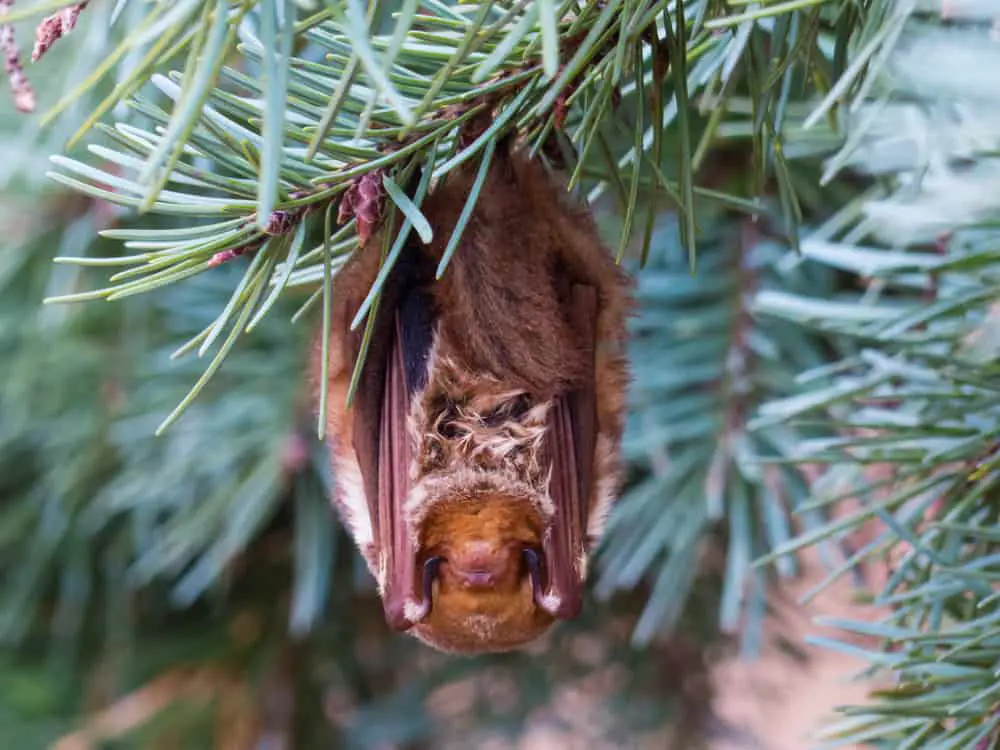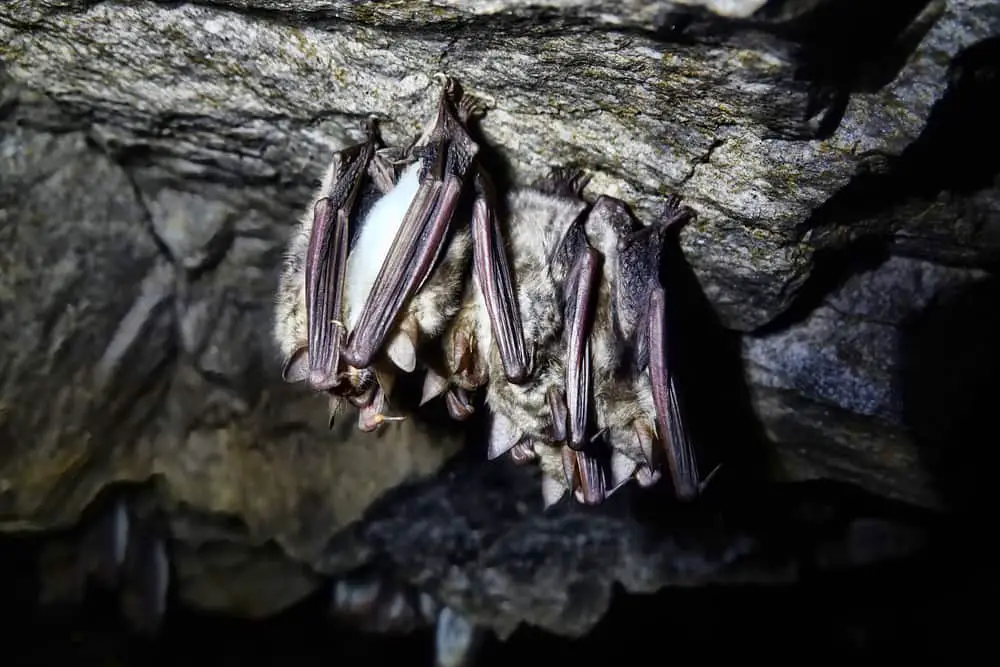The Vespertilionidae family, commonly known as vesper bats, is one of the largest and most diverse groups of bats worldwide. With over 400 species distributed in every continent except Antarctica, these nocturnal mammals have adapted to a variety of habitats ranging from deserts and forests to urban areas. Despite their ecological importance as insectivores and seed dispersers, many vespertilionids face threats such as habitat loss, hunting, and disease.
The taxonomic classification of vespertilionid bats has been a subject of debate among researchers due to their high diversity and morphological variability. Recent studies combining molecular data with traditional morphology-based approaches have shed light on the evolutionary relationships within this group.
Moreover, advances in acoustic analysis techniques have enabled more accurate identification of bat species based on their echolocation calls. In this article, we will review the current knowledge on the ecology, evolution, and conservation status of Vespertilionidae bats.

Subfamilies, Tribes, and Genus
- Subfamily Kerivoulinae
- Genus Kerivoula – painted bats
- Genus Phoniscus – trumpet-eared bats
- Subfamily Murininae
- Genus Harpiocephalus – hairy-winged bats
- Genus Harpiola
- Genus Murina – tube-nosed insectivorous bats
- Subfamily Myotinae
- Genus Myotis – mouse-eared bats
- Genus Eudiscopus – disk-footed bat
- Genus Submyotodon – broad-muzzled bats
- Subfamily Vespertilioninae
- Tribe Antrozoini
- Genus Antrozous – pallid bat
- Genus Bauerus – Van Gelder’s bat
- Genus Rhogeessa – rhogeessa bats
- Tribe Eptesicini
- Genus Arielulus
- Genus Eptesicus – house bats
- Genus Glauconycteris – butterfly bats
- Genus Hesperoptenus – false serotine bats
- Genus Histiotus – big-eared brown bats
- Genus Ia – great evening bat
- Genus Lasionycteris – silver-haired bat
- Genus Scoteanax – Rüppell’s broad-nosed bat
- Genus Scotomanes – harlequin bat
- Genus Scotorepens – lesser broad-nosed bats
- Genus Thainycteris
- Tribe Lasiurini
- Genus Aeorestes – hoary bats
- Genus Dasypterus – yellow bats
- Genus Lasiurus – hairy-tailed bats
- Tribe Nycticeiini
- Genus Nycticeius – evening bats
- Tribe Perimyotini
- Genus Parastrellus – western pipistrelle
- Genus Perimyotis – eastern pipistrelle
- Tribe Pipistrellini
- Genus Glischropus – thick-thumbed bats
- Genus Nyctalus – noctule bats
- Genus Pipistrellus – some of the pipistrelle bats
- Genus Scotoecus – house bats
- Genus Scotozous – Dormer’s bat
- Genus Vansonia – Rüppell’s pipistrelle
- Tribe Plecotini
- Genus Barbastella – barbastelles
- Genus Corynorhinus – American lump-nosed bats
- Genus Euderma – spotted bat
- Genus Idionycteris – Allen’s big-eared bat
- Genus Otonycteris – desert long-eared bat
- Genus Plecotus – lump-nosed bats
- Tribe Scotophilini
- Genus Scotophilus – yellow bats
- Tribe Vespertilionini
- Genus Afronycteris
- Genus Cassistrellus – helmeted bats
- Genus Chalinolobus – wattled bats
- Genus Falsistrellus
- Genus Hypsugo – Asian pipistrelles
- Genus Laephotis – long-eared bats
- Genus Mimetillus – Moloney’s mimic bat
- Genus Mirostrellus – Joffre’s bat
- Genus Neoromicia
- Genus Nycticeinops – Schlieffen’s bat
- Genus Nyctophilus – New Guinean and Australian big-eared bats
- Genus Pharotis – New Guinea big-eared bat
- Genus Pseudoromicia – Sub-Saharan vesper bats (serotines)
- Genus Philetor – Rohu’s bat
- Genus Tylonycteris – bamboo bats
- Genus Vespadelus – includes forest bats
- Genus Vespertilio – frosted bats
- Tribe incertae sedis
- Genus Rhyneptesicus – Sind bat
- Tribe Antrozoini
The Diversity Of Vesper Bats
The Vespertilionidae family of bats, also known as vesper bats, is one of the largest and most diverse bat families in the world.
These small to medium-sized insectivorous bats are found throughout much of the world’s temperate and tropical regions.
Their behavioral patterns vary widely among species, but all share some common characteristics such as their foraging strategies.
Vesper bats display a range of foraging strategies that reflect adaptations to different habitats and prey types.
Some species specialize in catching insects on the wing while others hunt by gleaning them from vegetation or using echolocation to locate prey hidden within crevices or under bark.
Many species feed opportunistically on a variety of prey types depending on what is available at any given time.
This diversity in feeding behavior makes vespertilionidae an important group for understanding predator-prey interactions and ecosystem dynamics.
Habitat Adaptations And Ecological Importance
In the world of vespertilionidae, adaptive behavior plays a crucial role in their survival. These bats have been known to adapt to various habitats such as forests, deserts and even urban areas.
Habitat adaptation is essential for these creatures as it allows them to find food sources, shelter and avoid predators. Some species within this family have evolved echolocation abilities which allow them to navigate through complex environments with ease. This ability also helps them locate prey while avoiding obstacles.
Vespertilionidae are ecologically significant due to their roles in pollination, insect control and seed dispersal. They aid in maintaining ecological balance by feeding on insects that would otherwise damage crops or become pests.
Their contribution towards plant propagation has long-term effects on forest regeneration and conservation efforts. Furthermore, they serve as an important indicator of habitat quality since changes in bat populations can indicate changes in ecosystem health.
As such, understanding the behavioral adaptations and ecological importance of these creatures remains vital for wildlife management and conservation efforts globally.
Are Butterflies Vertebrates? Unraveling the Wings of Classification
Threats To Vespertilionid Populations
Vespertilionidae are known for their remarkable habitat adaptations and ecological importance, but these species face several threats that put their populations in danger.
One of the most significant threats to vespertilionid populations is human interference. As urbanization continues to expand and infrastructure development increases, natural habitats are destroyed or fragmented, leaving bats with fewer places to roost, feed, and breed. Human activities such as agriculture and logging also contribute to deforestation which impacts bat populations by reducing food availability or changing the structure of forests where they live.
Another major threat facing vespertilionids is disease outbreaks. White-nose syndrome (WNS) caused by a fungus called Pseudogymnoascus destructans has decimated hibernating bat populations across North America since its discovery in 2006. The disease causes extensive tissue damage in affected bats during winter hibernation periods leading them to wake up too early from torpor resulting in increased energy expenditure before spring when insects become available again for feeding causing mass mortality events of up to 90% within colonies.
Climate change may exacerbate this issue because warmer winters will provide more favorable conditions for fungal growth increasing the risk of WNS transmission among bat populations. Disease outbreaks can have severe consequences on vespertilionid communities and must be addressed urgently through research and conservation efforts.
Taxonomic Classification And Evolutionary Relationships
Genetic studies have provided invaluable insights into the phylogenetic relationships of vespertilionidae. The family Vespertilionidae is a diverse group of bats that are distributed worldwide, with over 450 species identified to date. These bats are characterized by their small size and complex auditory systems, which allow them to navigate in complete darkness using echolocation.
Phylogenetic analyses based on molecular data have revealed a complex evolutionary history within Vespertilionidae. Studies suggest that the family may be divided into several subfamilies, each with distinct morphological and ecological features. Some researchers propose that certain genera such as Myotis and Pipistrellus may not constitute monophyletic groups, highlighting the need for further research into these taxa.
As genetic techniques continue to advance, they will undoubtedly shed new light on the evolutionary relationships of this fascinating group of mammals.
Overall, genetic studies have greatly enhanced our understanding of the taxonomic classification and evolutionary relationships within Vespertilionidae. While there is still much to learn about this important family, continued research efforts promise to uncover even more interesting findings in the future.

Echolocation Analysis For Accurate Species Identification
Taxonomic classification and evolutionary relationships are crucial for understanding the diversity of organisms on our planet. As a family, vespertilionidae comprises more than 400 species of bats that inhabit various regions across the world. These bats exhibit diverse morphological characteristics and behaviors, which make them an intriguing group to study.
One of the unique features of vespertilionid bats is their ability to echolocate. Echolocation modeling has been used extensively to understand how these bats use sound waves to navigate their environments and capture prey. This technique involves analyzing the frequency and timing of bat calls, as well as measuring the echoes produced by objects in their surroundings.
By studying echolocation signals, researchers have made significant progress in identifying different species within this family. Moreover, they can differentiate between closely related species that share similar physical traits but differ in their acoustic signatures. Hence, echolocation analysis has emerged as a powerful tool for accurate species identification in vespertilionids and other bat families.
In addition to aiding with taxonomy, echolocation modeling provides insight into the adaptive evolution of these animals’ sensory systems. The selective pressures imposed by different habitats may drive variations in call frequencies or intensities among populations or species over time. Thus, studying how different factors influence echolocation behavior can shed light on speciation processes and help us better understand how biodiversity arises.
Furthermore, ecologists can use this knowledge to develop conservation strategies that protect endangered bat populations from habitat destruction or disturbance events caused by human activities such as construction or mining operations.
Conservation Efforts For Vespertilionidae Bats
Collaborative research has been crucial in the conservation efforts for vespertilionidae bats.
Various institutions and organizations, including government agencies, universities, and non-profit groups, have collaborated to conduct research on various aspects of these bat species.
Such collaborative research has provided valuable insights into their biology, ecology, behavior, and distribution patterns.
These data are essential in developing effective conservation strategies that take into account the unique needs of each species.
Community awareness campaigns have also played a critical role in conserving vespertilionidae bats.
Many people consider these creatures pests and nuisances due to misconceptions about their behavior or fear stemming from myths surrounding them.
This attitude can lead to unnecessary bat killings or destruction of their habitats.
Through community awareness campaigns, it is possible to educate people about the importance of these animals in maintaining ecological balance while dispelling common myths associated with them.
By raising public awareness through outreach programs such as workshops and seminars, we can encourage more people to appreciate the value of biodiversity conservation and become advocates for protecting endangered species like vespertilionidae bats without causing harm to human interests or property.
Conclusion
The Vespertilionidae family of bats is a diverse and ecologically important group, with over 400 species distributed worldwide. These small, insectivorous bats have adapted to a wide range of habitats, from forests and grasslands to deserts and urban environments.
Despite their importance in maintaining ecosystem balance through pest control and pollination services, many vespertilionid populations are threatened by habitat loss, climate change, and disease.
Taxonomic classification has helped researchers better understand the evolutionary relationships between different vespertilionid species. Echolocation analysis has also proven useful in accurately identifying these bats, which can be difficult due to their similar physical appearances.
Conservation efforts for vespertilionids must prioritize protecting their natural habitats and mitigating the impacts of human activities on bat populations.
In conclusion, the Vespertilionidae family is an integral part of global biodiversity that deserves our attention and protection. As we continue to learn more about these fascinating creatures through taxonomic studies and echolocation analysis, it becomes increasingly clear how vital they are to healthy ecosystems.
With concerted conservation efforts focused on preserving their habitats and reducing human impact on bat populations around the world, we can ensure that future generations will continue to benefit from the ecological services provided by these remarkable animals.

